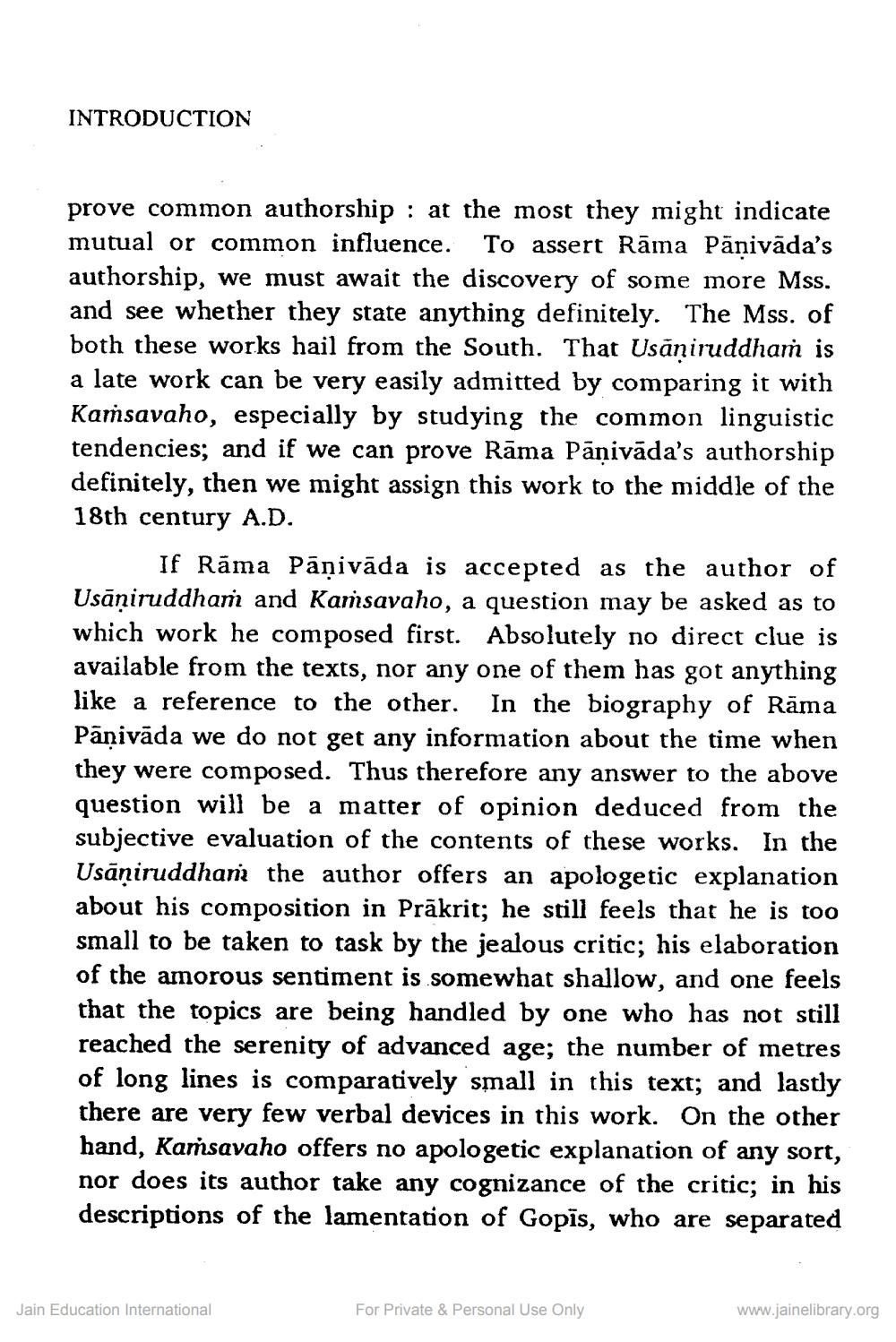________________
INTRODUCTION
prove common authorship : at the most they might indicate mutual or common influence. To assert Rāma Pāṇivāda's authorship, we must await the discovery of some more Mss. and see whether they state anything definitely. The Mss. of both these works hail from the South. That Usaniruddham is a late work can be very easily admitted by comparing it with Kamsavaho, especially by studying the common linguistic tendencies; and if we can prove Rāma Pāṇivāda's authorship definitely, then we might assign this work to the middle of the 18th century A.D.
If Rāma Pāņivāda is accepted as the author of Usāņiruddham and Kamsavaho, a question may be asked as to which work he composed first. Absolutely no direct clue is available from the texts, nor any one of them has got anything like a reference to the other. In the biography of Rāma Pānivāda we do not get any information about the time when they were composed. Thus therefore any answer to the above question will be a matter of opinion deduced from the subjective evaluation of the contents of these works. In the Usāṇiruddhan the author offers an apologetic explanation about his composition in Prākrit; he still feels that he is too small to be taken to task by the jealous critic; his elaboration of the amorous sentiment is somewhat shallow, and one feels that the topics are being handled by one who has not still reached the serenity of advanced age; the number of metres of long lines is comparatively small in this text; and lastly there are very few verbal devices in this work. On the other hand, Kamsavaho offers no apologetic explanation of any sort, nor does its author take any cognizance of the critic; in his descriptions of the lamentation of Gopīs, who are separated
Jain Education International
For Private & Personal Use Only
www.jainelibrary.org




